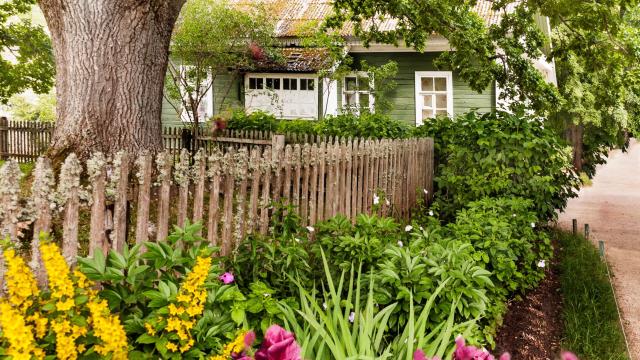Even if you spend a decent amount of time, money, and effort keeping your garden, lawn, and/or other parts of your landscape looking good, you may be leaving out some of your yard’s largest residents: Trees. It can be easy to forget about trees, especially when they were already on your property when you moved in.
We’re not saying that trees need a ton of care — in fact, they’re pretty self-sufficient — but if they are close to your home, there are a few things you may want to do to help keep them healthy and looking good. Here’s what to know.
How to take care of newly planted trees
Let’s start out with trees that you did plant. As you probably found out, buying young trees can be expensive, so in addition to wanting your tree babies to grow and thrive, you’ll also want to protect your investment.
That starts when you first plant the tree. As Kathy Robinson from Robby’s Nursery in Bakersfield, California tells 23ABC News, do this by digging a large hole and filling it with a mixture of native soil and mulch, which will help its roots settle in and take hold.
Then, create a small circle of dirt around the root ball — known as a water well — and fill it with water. “I like to fill them up every morning three to four inches of standing water directly over that root ball,” Robinson explains. It should take about a month for the new tree to take root. After that, the water well can go, and you can start fertilizing the tree.
How to take care of grown trees
When it comes to watering established adult trees, it’s balancing act. Both getting too much or too little water can harm trees. So according to the Arbor Day Foundation, you want the soil around the tree to be moist, but not soggy. Here’s how they suggest checking a tree’s soil:
You can check soil moisture by using a garden trowel and inserting it into the ground to a depth of 2″, and then move the blade of the trowel back and forth to create a small narrow trench. Then use your finger to touch the soil. If it is moist to the touch, then they do not need water.
Pruning trees is another way to help keep them healthy. But it involves more than cutting off branches that appear to be dead: When, how, and what you prune depends on the season, and the specific needs of the tree. The Arbor Day Foundation has several written and video guides to pruning, including this one:
In most cases, minimal maintenance can keep your trees looking healthy for years to come.

Leave a Reply
You must be logged in to post a comment.